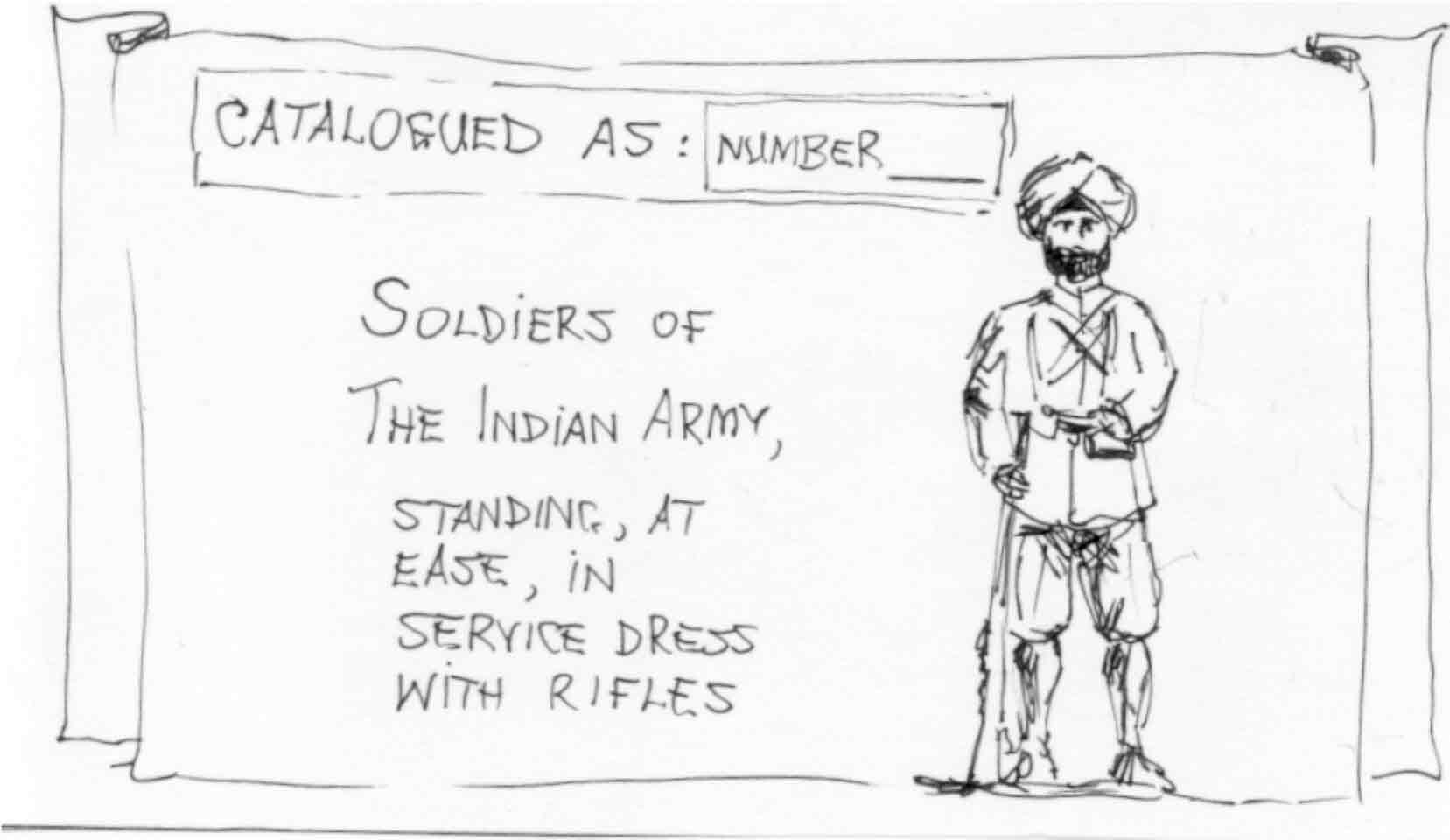A box which might correspond to this label, such as a flat 3-inch by 5-inch box, would be suitable for storing and displaying three standard scale soldiers.
--more--

"Traditionally," the Photographer continued, "as we both know, toy soldiers such as those shown in Plate 97 were packed eight or more to a box."
The Collector replied: "The reason we are packing our troops in boxes containing only three figures, instead of the traditional quantity of eight or more, lies in the fact that British Army marching formations commonly comprised three soldiers per rank. Such a drill formation is known as column of three."
"Observe", continued the Collector, "that in Plate 97 the toy soldiers were arrayed in columns of three (that is, three soldiers per rank) in each of the two units. By storing our troops in boxes of three, we thus provide one rank of soldiers per box."
"If", the Collector explained, "you wish to see a lucid illustration of British Indian Army troops marching in column of three formation, you might wish to look at page 279 of the book India's Army by Major Donovan Jackson (see bibliography). On this page is an informative photograph, which is accompanied by the caption 'A Company of Punjab Infantry on the March in Northern India.' You are, of course, welcome to examine my copy of this book, in the event you are unable to find a copy elsewhere."
At this point, the colloquy between the two gentlemen was interrupted by the waiter at the Photographer's Club, who wheeled up a serving cart bearing the Photographer's order of Broiled Squab, Boiled Carrots, and Steamed Asparagus, and the Collector's order of Roast Beef, Fried Potatoes, and Buttered Peas.
Go to top of page